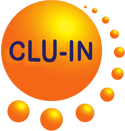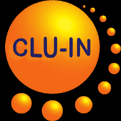Phytotechnology Project Profiles
Phytoremediation at Open Burn and Open Detonating Area, Ensign-Bickford Company in Connecticut
Last Updated: Fall 2004 |
||
| Site Information | ||
| Site Name, Location: | Ensign-Bickford Company, Simsbury, CT, United States | |
| Site Type: | Not Available | |
| Is this a Federal Superfund Site? |
No | |
| Is this a Federal or Military Site? |
No | |
Project Information |
||||||||||||
| Project Name: | Phytoremediation at Open Burn and Open Detonating Area, Ensign-Bickford Company in Connecticut | |||||||||||
| Site History and Background: | The Ensign-Bickford Company in Simsbury, Connecticut, conducted open burn/open detonation (OB/OD) activities, resulting in near surface soils in the area becoming contaminated with lead. From 1996 to 1997, Edenspace Systems Corp. (formerly known as Phytotech, Inc.) conducted phytoremediation treatment of a 1.5 acre area surrounding the OB/OD area. In 1998, this effort was expanded to include a total of 2.35 acres and to address not only reductions in total lead concentrations, but also stabilizing leachable lead in the soil. | |||||||||||
| Scale: | Full | |||||||||||
| Project Status: | Complete | |||||||||||
| Project Start Date: | April 1998 | |||||||||||
| Project Completion Date: | October 1998 | |||||||||||
| Media Treated: |
| |||||||||||
| Contaminants Treated: |
| |||||||||||
| Phytotechnology Mechanism(s): | Phytoremediation Phytoextraction Phytostabilization |
|||||||||||
| Plants and other Vegetation Used: | Indian Mustard Sunflower |
|||||||||||
| Planting Description: | Seeded with three treatment crops. Site preparation activities began in April 1998. Soils were fertilized with nitrogen, phosphorus, and potassium. Dolomite lime was also added to the soil to adjust the soil pH to within a range for optimal plant growth and metal uptake. The fertilizers and lime were tilled into the soil to a depth of 15 to 20 cm. Then the areas were mechanically seeded with Indian mustard ("Brassica juncea"). An overhead irrigation system was installed to provide adequate moisture for plant growth, and an irrigation gauge was used to monitor moisture. | |||||||||||
| Planting Area: | 2.35 acres | |||||||||||
| Climate: | Temperature range: -26 to 102 F; Elevation: 174 feet; Mean annual precipitation: 44.1 inches; Growing season: 5/12 to 9/23. | |||||||||||
| O & M Requirements: | Irrigation; fertilization with N, P, K, (tilled to 15-20 cm depth) and foliar fertilizers via irrigation system; dolomite lime added to adjust pH (tilled to 15-20 cm depth); stabilizing amendments added to Area 5. | |||||||||||
| Performance Data: | Plant growth for each of the treatment crops was generally good. Some areas within the treatment area remained saturated; these areas exhibited poor plant growth and reduced biomass yields. Total lead concentrations in Areas 1-4 decreased from an average of 635 mg/kg (4/98) to 478 mg/kg (10/98); by 10/98, the highest concentrations in Areas 1-4 had been reduced. Lead uptake ranged from 342 mg/kg (dry weight) in the Indian mustard in treatment crop 1 to 3252 mg/kg in the Indian mustard in treatment crop 3. Average lead uptake measured in the sunflower plant material and Indian mustard were similar, having average lead concentrations from all crops of approximately 1000 mg/kg (dry weight). The average reduction in SPLP lead concentration in Area 5 was 0.95 mg/L. During phytoextraction total soil lead concentrations in the surface soils in Areas 1-4 decreased from an average of 635 mg/kg (April 1998) to 478 mg/kg (October 1998). The phytoextraction program has reduced the highest total lead concentrations so that no samples in excess of 4000 mg/kg were found. Before phytoremediation, 7% of the total treatment area had soil lead concentrations above 2000 mg/kg. After treatment, only 2% of the area had concentrations above 2000 mg/kg. The percentage of the total treatment area having concentrations greater than 1000 mg/kg was reduced from 17% to 16%. The contaminant profiles in Figure 2 show the distribution of surface lead contamination before and after treatment. A comparison of the April (before treatment) and October (after treatment) 1998 contaminant profiles in Figure 2 shows that the highest concentrations in Areas 1-4 have been reduced. Lead uptake ranged from a low of 342 mg/kg (dry weight) in the Indian mustard in treatment crop 1 to 3252 mg/kg in the Indian mustard in treatment crop 3. Average lead uptake measured in the sunflower plant material and Indian mustard were similar, having average lead concentrations from all crops of approximately 1000 mg/kg (dry weight). During phytostabilization, the average reduction in SPLP lead concentration in Area 5 was 0.95 mg/L. | |||||||||||
| Cost of the Phytotechnology Project: | Not available | |||||||||||
| Lessons Learned: | Lead uptake ranged from 342 mg/kg in Indian mustard in treatment crop 1 to 3252 mg/kg in Indian mustard in treatment crop 3. Average lead uptake in sunflower similar, approximately 1000 mg/kg. Certain areas within the treatment area remained excessively wet throughout the growing season; these areas exhibited poor plant growth and reduced biomass yields. Some of the sunflowers from treatment crop 2 required replanting. After the 1998 treatment, the following observations and recommendations were noted: The ongoing phytoextraction program continued to reduce site-wide average total lead concentrations at a rate of approximately 150-160 mg/kg per year (Phytotech, Inc., 1999). Upon reviewing the results of the 1998 phytoremediation season, it was suggested that the areas having total lead concentrations less than 1000 mg/kg be treated again using phytostabilization, and areas having concentrations greater than 1000 mg/kg be treated again using phytoextraction. Because the greatest total lead concentration reductions occurred in the areas containing the greatest initial concentrations, phytoextraction is expected to significantly further reduce the area requiring additional phytoextraction treatment. (Phytotech, Inc., 1999). Field based soil survey techniques can be effectively used to determine remedial applications and validate treatment effectiveness. A field based XRF instrument was used to map surface lead concentrations, and the analyses correlated well (r=0.928) with laboratory based lead analyses. Planted systems are vulnerable to unpredictable climatic conditions. Re-planting and less than optimal yields of the sunflower crop were observed. | |||||||||||
| Comments: | Plant growth for treatment crops generally good, although some areas remained saturated and thus exhibited poor plant growth and reduced biomass yields. Further treatment is planned during 1999 and 2000. | Point(s) of Contact |
||||||||||
|
Michael Blayock Director of Technology Edenspace 15100 Enterprise Court, Suite 100 Dulles, VA 20151 Dulles, VA United States Telephone: (703) 961-8700 Fax: (703) 961-8939 E-mail: blaylock@edenspace.com |
||||||||||||
| Information Source(s): | Waste Site Cleanup & Reuse in New England - Ensign Bickford http://yosemite.epa.gov/R1/npl_pad.nsf/0/7e6c98dcbb2aa65d85256c29006e78c4?OpenDocument EPA. Federal Remediation Technologies Roundtable. 2000. Technology Cost and Performance Report Summary: Phytoremediation at the Open Burn and Open Detonating Area, Ensign-Bickford Company, Simsbury, Connecticut. http://costperformance.org/profile.cfm?ID=66 EPA. Federal Remediation Technologies Roundtable. 2000. Technology Cost and Performance Report: Phytoremediation at the Open Burn and Open Detonating Area, Ensign-Bickford Company, Simsbury, Connecticut. http://costperformance.org/pdf/simsbury.pdf EPA. 2005. Use of Field-Scale Phytotechnology for Chlorinated Solvents, Metals, Explosives and Propellants, and Pesticides. EPA 542-R-05-002. http://www.epa.gov/tio/download/remed/542-r-05-002.pdf |
|||||||||||
| Associated Vendor(s) or Consultant(s): | Edenspace, Inc. |
|||||||||||
| | ||||||||||||





